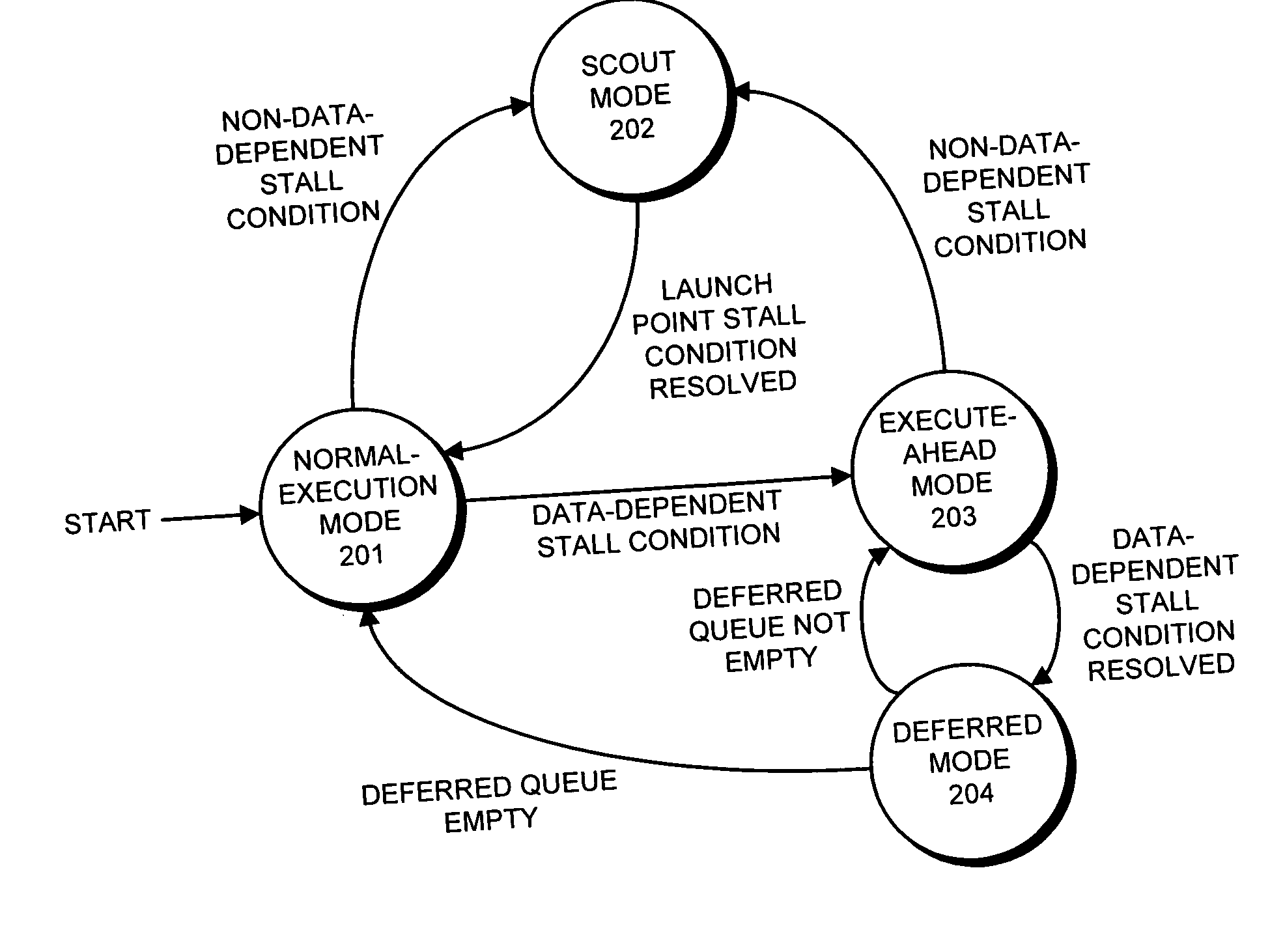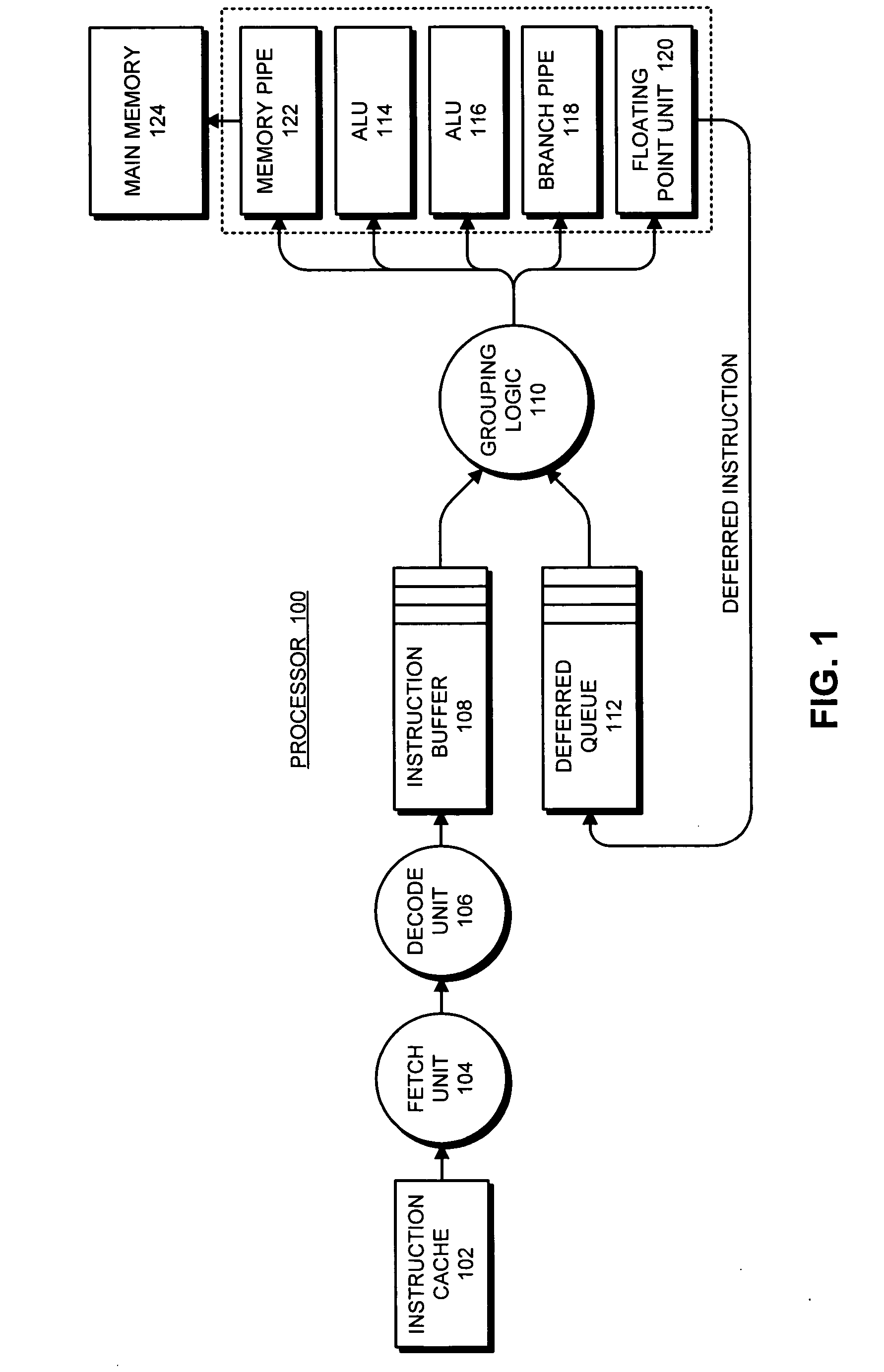Branch prediction accuracy in a processor that supports speculative execution
a technology of speculative execution and branch prediction, applied in the direction of instruments, digital computers, computation using denominational number representation, etc., can solve the problems of large waiting time of microprocessor systems, unable the inability to meet the demand of a large fraction of time, so as to improve the branch prediction accuracy
- Summary
- Abstract
- Description
- Claims
- Application Information
AI Technical Summary
Benefits of technology
Problems solved by technology
Method used
Image
Examples
Embodiment Construction
[0035] The following description is presented to enable any person skilled in the art to make and use the invention, and is provided in the context of a particular application and its requirements. Various modifications to the disclosed embodiments will be readily apparent to those skilled in the art, and the general principles defined herein may be applied to other embodiments and applications without departing from the spirit and scope of the present invention. Thus, the present invention is not intended to be limited to the embodiments shown, but is to be accorded the widest scope consistent with the principles and features disclosed herein.
Branch Predictor
[0036] In one embodiment of the present invention, the branch prediction associated with each branch is recorded in a 2-bit field. Consequently, there are 4 states possible for the branch predictor. The four states (along with their associated bit patterns) are:
Strongly-not-taken (SNT 600){00}Weakly-not-taken (WNT 601){01}...
PUM
 Login to View More
Login to View More Abstract
Description
Claims
Application Information
 Login to View More
Login to View More - R&D
- Intellectual Property
- Life Sciences
- Materials
- Tech Scout
- Unparalleled Data Quality
- Higher Quality Content
- 60% Fewer Hallucinations
Browse by: Latest US Patents, China's latest patents, Technical Efficacy Thesaurus, Application Domain, Technology Topic, Popular Technical Reports.
© 2025 PatSnap. All rights reserved.Legal|Privacy policy|Modern Slavery Act Transparency Statement|Sitemap|About US| Contact US: help@patsnap.com



